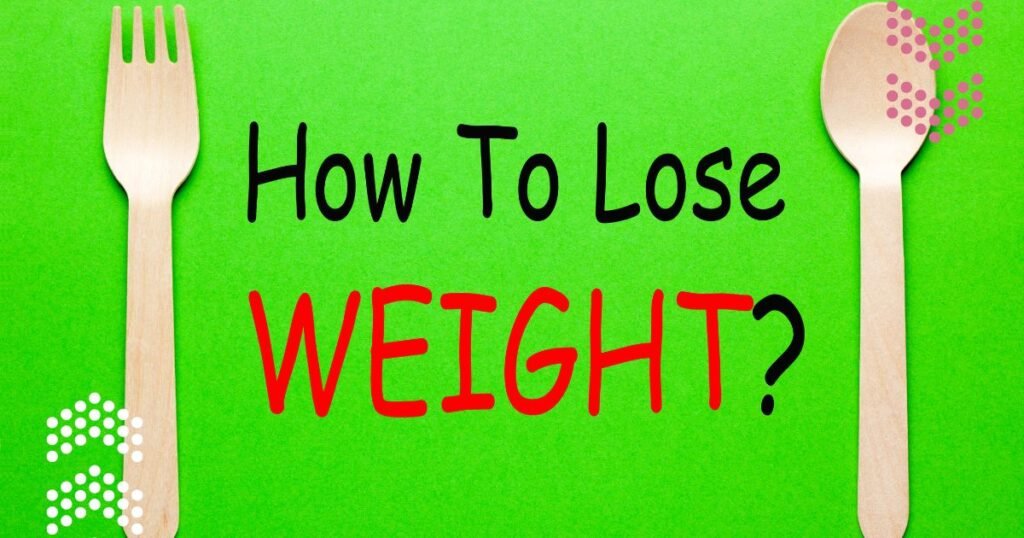Why Weight Loss Isn’t Always Fat Loss for Women: Understanding Water Weight, Muscle Loss, and Fat
Many women associate weight loss with losing fat, assuming that seeing the number on the scale drop means they’re becoming leaner. However, weight loss doesn’t necessarily mean fat loss. In fact, the weight loss process can also involve losing water and muscle mass, not just body fat.
This misunderstanding often leads women to pursue quick-fix solutions that result in short-term weight loss but fail to promote lasting fat loss or improved body composition. It’s crucial to differentiate between these concepts to ensure a more informed and effective approach to weight management.
In this article, we’ll explore why weight loss isn’t always fat loss, the importance of preserving muscle mass, how water weight plays a role, and why focusing on fat loss rather than just weight is key for sustainable health and fitness results.
Understanding Weight Loss: The Different Components
Water Weight
Water weight is the amount of fluid your body retains. This retention fluctuates based on several factors, such as hormonal changes, diet, and hydration levels. For women, water weight can spike dramatically, especially during specific times in the menstrual cycle, pregnancy, or even after a salty meal.
The rapid drop in weight that many women experience when they first start a new diet is often due to the loss of water weight. When you reduce your carbohydrate intake, for example, your body uses stored glycogen, which holds water. As the glycogen depletes, you lose water, which can make it seem like you’re shedding fat, but the loss is primarily fluid.
While losing water weight can make the scale go down, it’s temporary. Once you rehydrate or adjust your diet, the weight can return just as quickly. Understanding this fluctuation can help women avoid frustration when they notice their weight bouncing up and down.
Muscle Loss
Losing muscle during weight loss is a common issue, especially for women who focus solely on calorie restriction without engaging in strength training. Muscle is metabolically active tissue, meaning it burns calories even when at rest. The more muscle you have, the higher your resting metabolic rate (RMR), which can aid fat loss over time.
When women drastically cut calories or over-rely on cardio, their bodies may begin breaking down muscle for energy. This loss not only slows metabolism but can also lead to decreased strength, endurance, and an unfavorable change in body composition. Instead of looking toned and fit, many women find that they become “skinny fat”—weighing less but with a higher body fat percentage due to muscle loss.
To avoid muscle loss, women should incorporate resistance training at least 2-3 times a week, alongside consuming adequate protein. This helps to maintain muscle mass while promoting fat loss, leading to a leaner, healthier physique. It’s also important to maintain a modest caloric deficit rather than adopting extreme diets.
Fat Loss
Fat loss is the primary goal for most women embarking on a weight loss journey, but it is often misunderstood. Fat loss occurs when your body uses stored fat as an energy source due to a caloric deficit. However, unlike water weight or muscle loss, fat loss takes time.
Women’s hormones, especially estrogen, play a significant role in where and how fat is stored and burned. Areas such as the hips, thighs, and stomach are often more resistant to fat loss because of the hormonal influence. This means that losing fat in these areas requires consistency and patience.
It’s important to understand that fat loss is gradual and not always reflected on the scale immediately. Measuring body fat percentage, taking progress photos, or using a tape measure are better indicators of true fat loss progress. The scale alone cannot differentiate between fat, muscle, and water, so it should not be the only tool used to track changes.
Water Weight: What Women Need to Know
For women, water retention can be influenced by numerous factors. Hormonal fluctuations, particularly during the menstrual cycle, can lead to temporary bloating and weight gain due to water retention. Additionally, high-sodium diets or dehydration can cause the body to retain extra fluids.
One of the most common mistakes women make is associating water retention with fat gain. It’s easy to feel discouraged when the scale suddenly jumps up, but these fluctuations are typically temporary and should not be mistaken for fat gain. The key is to maintain consistent hydration, reduce sodium intake, and avoid drastic dietary changes that can lead to water retention.
Hydration is also vital. Drinking plenty of water can help flush out excess sodium and reduce bloating. In fact, staying hydrated is one of the most effective ways to minimize water retention and avoid these frustrating fluctuations.
For further information on how weight loss can affect water retention and how women can better manage their hydration, check out this guide.
Muscle Loss: Why It Happens and Its Impact on Women’s Health
Losing muscle can be one of the most detrimental effects of improper weight loss strategies. When women cut calories too drastically or avoid strength training, they risk losing muscle mass, which can have a profound impact on their overall health and fitness.
The impact of muscle loss on metabolism is significant. Muscle tissue requires more energy to maintain than fat, meaning that the more muscle you have, the more calories your body burns at rest. This helps prevent metabolic slowdown, which is common during extended periods of weight loss.
Women who experience muscle loss also report feeling weaker, more fatigued, and less capable of performing everyday tasks. Over time, muscle loss can lead to reduced bone density, increased risk of injury, and overall poorer health.
Preventing muscle loss requires a combination of adequate protein intake and resistance training. For best results, women should aim for at least 2-3 strength training sessions per week, targeting all major muscle groups. A diet rich in lean proteins, such as chicken, fish, and plant-based protein sources, helps to preserve lean mass while burning fat.
The Science of Fat Loss: How It Works for Women
Fat loss occurs when the body uses stored fat as an energy source during a caloric deficit. For women, this process is influenced by several factors, including hormones like estrogen, which can make fat loss more difficult in certain areas of the body.
Unlike water weight, which can fluctuate daily, fat loss is a slow and steady process. Many women find that fat loss happens unevenly across the body, with stubborn areas like the hips, thighs, and lower abdomen often being the last to change. This is due to hormonal influences that affect fat storage in these regions.
It’s important for women to approach fat loss with patience and consistency. Quick-fix solutions may offer rapid weight loss but often result in muscle and water loss rather than true fat reduction. Sustainable fat loss is achieved through a balanced approach that combines a moderate caloric deficit with regular exercise, including both cardio and strength training.
Common Mistakes Women Make When Trying to Lose Weight
One of the most common mistakes women make during their weight loss journey is focusing too much on the number on the scale. While the scale can be a useful tool for tracking progress, it doesn’t differentiate between water, muscle, and fat loss.
Crash diets, excessive cardio, and eliminating entire food groups are some of the strategies women often turn to in an attempt to lose weight quickly. However, these approaches can lead to muscle loss, slowed metabolism, and, in many cases, weight regain once the diet ends.
To avoid these mistakes, women should focus on sustainable changes that promote long-term fat loss. This includes maintaining a slight caloric deficit, prioritizing nutrient-dense foods, and incorporating a mix of strength training and cardiovascular exercise into their fitness routine.
For a comprehensive guide on healthy weight loss strategies for women, visit this article.
How Women Can Accurately Track Fat Loss
Rather than relying solely on the scale to track progress, women should use other methods to measure fat loss accurately. One of the best ways to track fat loss is by measuring body fat percentage using tools like DEXA scans, calipers, or body composition scales.
Taking regular progress photos or using a tape measure to track changes in specific body areas, such as the waist, hips, and thighs, can also provide valuable insight into fat loss progress. These methods offer a more reliable way to track changes in body composition, rather than just focusing on total weight.
Non-scale victories, such as how your clothes fit, improvements in strength, and increased energy levels, can also be great indicators of fat loss progress. By shifting the focus away from the scale and toward these other measures, women can better gauge their overall success in reducing body fat and improving health.
The Importance of Resistance Training for Women
Many women avoid resistance training out of fear of becoming too bulky, but this is a misconception. Women do not produce the same levels of testosterone as men, making it unlikely that they will develop large muscles without intense weightlifting programs.
Resistance training is crucial for women who want to lose fat and preserve muscle. By building and maintaining muscle mass, women can boost their metabolism, making it easier to burn calories and achieve a leaner body. Resistance training also helps improve overall strength, bone density, and posture.
Incorporating 2-3 resistance training sessions per week, focusing on compound exercises that target multiple muscle groups, can make a significant difference in fat loss and muscle preservation. This, combined with a balanced diet, ensures women maintain lean muscle mass while burning fat.
Why Sustainable Fat Loss Is Key for Long-Term Success
Rapid weight loss, especially through extreme diets or over-exercising, is often unsustainable. Women who lose weight too quickly are more likely to regain the lost weight, especially if that weight loss includes muscle and water rather than fat.
Sustainable fat loss is about making long-term changes to diet and exercise habits. By focusing on a moderate caloric deficit, balanced nutrition, and regular physical activity, women can achieve steady, sustainable fat loss without the risks associated with rapid weight loss.
At ShapioX, we emphasize the importance of long-term strategies for fat loss and overall health. For more information on how to achieve sustainable fat loss, see our detailed article on Weight Loss vs. Fat Loss: What Women Need to Know.
Conclusion
Understanding the difference between weight loss, water weight, muscle loss, and fat loss is crucial for women who want to achieve sustainable results. Focusing solely on the scale can be misleading, as it doesn’t account for the changes happening within the body.
Women should prioritize fat loss while preserving muscle mass and managing water weight fluctuations. By adopting a balanced approach that includes resistance training, adequate nutrition, and tracking non-scale victories, women can achieve long-lasting results.
At ShapioX, we offer a range of tools, resources, and support to help women on their weight loss and fat loss journeys. Browse our website to learn more about our women’s weight loss program, fitness shop, and expert blog to get started on your path to health and fitness.


